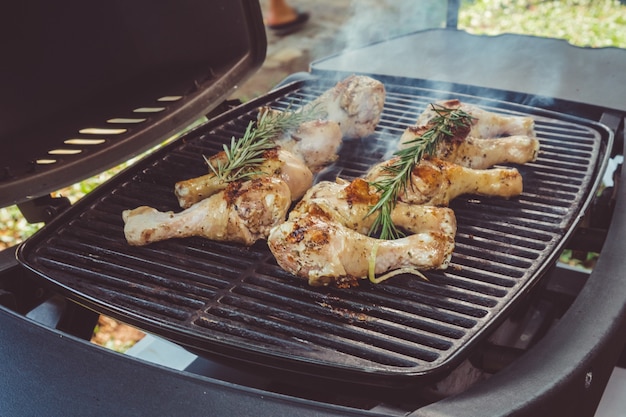How Much Should a BBQ Smoke?
A Guide to Achieving the Perfect Amount of Smoke for Your Barbecue
Barbecuing is a cherished culinary tradition in the United Kingdom, especially during the warm summer months. The tantalizing aroma and distinct smoky flavor that permeates through your favorite cuts of meat can elevate any outdoor dining experience. However, achieving the perfect amount of smoke can be a challenge for both seasoned grillers and newcomers alike. In this article, we will explore how much smoke should be used when barbecuing and provide you with some helpful tips to ensure you achieve the best results.
Understanding the Role of Smoke in Barbecuing
Smoke plays a crucial role in imparting flavor to grilled food. It adds a distinct smokiness that enhances the taste and aroma. However, it is essential to strike the right balance as too little smoke may result in a lack of flavor, while excessive smoke can overwhelm the dish, leaving an unpleasant aftertaste.
The Art of Controlling Smoke
Controlling the level of smoke during barbecuing requires some skill and attention to detail. Here are a few key factors to consider:
Choice of Wood: The type of wood you choose for smoking greatly influences the intensity of the smoke flavor. Different woods, such as hickory, mesquite, apple, or cherry, offer varying levels of smokiness. Experimenting with different wood types can help you find the perfect match for your preference.
Pre-Soaking Wood Chips: Soaking your wood chips before using them in your barbecue can help create a steady release of smoke. This technique ensures that the wood chips smolder rather than burn quickly, resulting in a more controlled and consistent level of smoke.
Monitoring Temperature: Maintaining a steady cooking temperature is key to achieving the desired amount of smoke. When barbecuing, it is important to keep an eye on both the cooking temperature and the level of smoke being produced. Adjustments can be made by adding or reducing wood chips based on the level of smoke required.
Signs of the Perfect Amount of Smoke
So how can you tell if you’ve achieved the right amount of smoke for your barbecue? Here are a few indicators to look out for:
Aroma: The aroma of smoke should be noticeable but not overpowering. It should create anticipation and make your mouth water, without overwhelming the senses.
Color: The meat should develop a beautiful golden-brown hue as it absorbs the smoke. This visual cue indicates that the smoke has penetrated the surface and has infused its flavors into the meat.
Taste: Ultimately, it all comes down to taste. The meat should have a well-balanced smoky flavor that complements its natural taste. Too little smoke may result in blandness, while too much smoke can lead to bitterness.
“Barbecuing is a delicate balance between fire, smoke, and heat. It takes practice and a keen eye to achieve the perfect amount of smokiness.”
Tips for Achieving the Perfect Amount of Smoke
To help you achieve the ideal amount of smoke for your barbecue, here are a few additional tips:
- Start with moderation: If you are unsure about the ideal level of smoke, it is best to start with a moderate amount and adjust accordingly. You can always add more smoke if needed.
- Control airflow: Proper airflow is crucial for maintaining consistent smoke throughout the cooking process. Adjust the vents on your barbecue to control the amount of oxygen reaching the fire and, consequently, the smoke production.
- Patience is key: Allow the smoke to penetrate the meat slowly. Rushing the process can result in an uneven distribution of smoke flavor.
- Use indirect heat: When smoking, it is best to use indirect heat rather than placing the meat directly over the flames. This technique allows for slower cooking and better smoke absorption.
- Keep it clean: Regularly cleaning your barbecue grill helps prevent excessive smoke caused by grease buildup.
- Experiment and have fun: Barbecuing is a personal and creative endeavor. Don’t be afraid to experiment with different wood types, spice rubs, and marinades to find the perfect combination for your palate.
Conclusion
Achieving the perfect amount of smoke for your barbecue is a delicate balance that requires practice and careful attention to detail. By understanding the role of smoke, choosing the right wood, monitoring temperature, and paying attention to key indicators, you can ensure a delicious and well-flavored meal every time. Remember to start with moderation, adjust as needed, and enjoy the art of barbecuing with the perfect amount of smoke!



